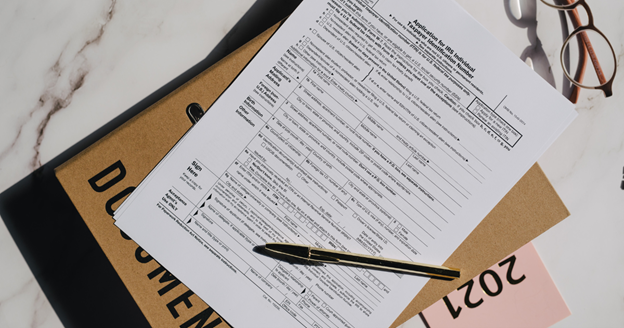What Is Targeted Direct Mail and Why It Still Works in 2025
What is targeted direct mail? Discover how this old-school strategy still drives real results by reaching specific audiences with personalized messages.
Everyone’s obsessed with digital – ads, funnels, SEO, social.
But here’s the twist: targeted direct mail is outperforming some of the flashiest online campaigns.
So, what is targeted direct mail really?
And why are smart marketers and small businesses still investing in it, especially when inboxes are full, and CPCs are through the roof?
Let’s break it down with facts, examples, and how to actually make it work.
What Is Targeted Direct Mail?
Targeted direct mail is sending physical marketing materials, like postcards, brochures, or letters, only to a specific audience based on key data.
Instead of blasting random addresses, you laser in on:
- Homeowners in a certain zip code
- Families with incomes above $100K
- People who recently bought a home
- Households with kids, seniors, or specific lifestyles
It’s precision over volume.
And when done right, it can feel more personal, and more trustworthy, than an email or Instagram ad.

How Targeted Direct Mail Works (Step by Step)
1. Build or buy a targeted list
You can rent or buy mailing lists based on specific filters: geography, home value, age, gender, interests, etc.
Or you can use your own customer database if you’ve collected addresses.
2. Craft your offer
No one wants another flyer. Your mail piece has to solve a problem, save money, or spark curiosity.
3. Design your mailer
Use bold headlines, great visuals, and one clear CTA. Think postcards, folded flyers, or envelope mailers with a special touch.
4. Print & mail
You send your pieces via USPS or through a mail house. Many vendors now offer tracking so you know when they land.
5. Track responses
QR codes, unique URLs, or special phone numbers can help track ROI.
Why It Still Works (and Sometimes Beats Digital)
Digital fatigue is real.
People scroll past ads, delete emails without reading, and use ad blockers.
Meanwhile, mail:
- Gets seen
- Gets held
- Gets remembered
Especially when it looks good and speaks to a real need.
Here’s why direct mail still holds its own:
1. Less competition in the mailbox
Your inbox has 100 unread emails.
Your mailbox? Maybe 5 letters.
One smart mailer can stand out a lot more.
2. Higher trust factor
Studies consistently show that physical mail feels more credible, especially for older or high-income homeowners.
3. Longer shelf life
A good postcard can sit on a fridge or countertop for days or weeks. Digital ads disappear in seconds.
4. Better targeting with less waste
You’re not paying for clicks from bots or fake traffic. You’re sending something tangible to real households.
A Local Case Study from Georgia
In 2024, a pest control business based in Augusta launched a campaign targeting suburban homeowners in high termite-risk zones.
Here’s what they did:
- Pulled a list of homes over 15 years old in termite-prone neighborhoods
- Sent a series of 3 postcards: education piece, offer ($150 off), and reminder
- Used a dedicated phone line and landing page to track leads
Results in 60 days:
- 48 inquiries
- 22 booked inspections
- 9 signed annual contracts
- Over $10,000 in closed business from a $1,200 mailing cost
All thanks to a simple but smart Targeted Direct Mail Georgia campaign.

Who Should Be Using Targeted Direct Mail?
This strategy isn’t one-size-fits-all.
But if you fall into any of these categories, it’s worth testing:
- Local service providers: roofers, HVAC, cleaners, lawn care, pest control
- Real estate agents and brokerages
- Dentists, chiropractors, and local clinics
- Non-profits fundraising in specific areas
- Retail shops with a local footprint
- Insurance or financial services reps targeting homeowners
If you need to build local trust fast, mail still works.
Tips to Maximize Your Results
1. Don’t skimp on the list
Garbage in, garbage out.
A quality mailing list is the backbone of your campaign.
Use reputable data providers, or partner with services that specialize in direct mail targeting.
2. Focus on one message
Don’t overload your flyer with 10 offers.
One bold headline + one strong CTA = more action.
3. Time it smart
Plan around seasons, events, or local trends.
Example: Send A/C tune-up offers in April, not July.
4. Combine it with digital
Retarget people who received the mail with matching Facebook or Google Display ads. It reinforces your message.
5. Measure every campaign
Use tracking numbers, unique URLs, or coupon codes. Even basic tracking helps prove ROI, and refine your next round.
Why Some Businesses Fail With Direct Mail
It’s not a magic bullet.
Here’s what usually causes poor results:
- Bad or outdated lists
- Boring, generic messaging
- Weak or confusing offers
- Zero follow-up
- No tracking or testing
This stuff still matters.
You wouldn’t throw up a Facebook ad without targeting or copy. Treat mail with the same strategy and care.
Is Targeted Direct Mail Expensive?
It depends on your volume and targeting.
Here’s a rough breakdown:
- Design: $50–$300 (one-time)
- Printing: $0.20–$0.60 per piece
- Mailing: $0.25–$0.45 per piece
- Lists: $50–$300 depending on source and filters
So, if you send 2,000 postcards, expect to spend anywhere from $800–$1,800 total.
Compare that to Google Ads where $1,800 might get you 100 clicks—and not all will convert.
Final Thoughts: Does It Still Work?
If you’ve got a good offer, a sharp design, and the right list—targeted direct mail is far from outdated.
It’s just underused.
Which makes it a golden opportunity for businesses willing to think outside the digital box.
Quick Recap:
- Targeted direct mail = sending print materials to a specific audience based on key filters
- It builds trust, cuts through noise, and sticks around longer than digital ads
- Works best for local, service-based, and high-trust industries
- Combine it with digital retargeting for bigger results
- Direct mail might not be shiny or trendy—but it works













